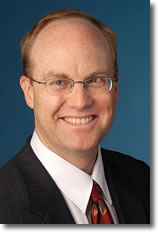|
In late June, the prestigious Institute of Medicine (IOM) released a report that could benefit the estimated 116 million American adults who are coping with chronic pain. The report calls for dramatic improvements in policies and programs that deal with pain. It discusses the barriers to improved pain care in considerable detail, saying that changes are needed in reimbursement policy and research emphasis, improvements are needed in clinical education and practice, and the public needs more information about self-management and appropriate treatment. "At all levels the focus should be on prevention," the authors say. "Overcoming the barriers to improved pain care will, in the committee's view, require a cultural transformation."
In the past, IOM reports have often served to energize and refocus efforts to improve the health-care system. "Relieving Pain in America: A Blueprint for Transforming Prevention, Care, Education, and Research" recommends that one of the NIH institutes should be designated as the lead institute for pain, and the NIH Pain Consortium should take a strong leadership role in improving the research on pain. It calls on the Department of Health and Human Services to develop a comprehensive plan to transform the way we assess, prevent, treat, and understand all types of pain. The plan will set specific goals, actions, and time frames for improvements, such as to:
- heighten awareness about pain and its health consequences;
- emphasize the prevention of pain;
- improve pain assessment and management in federal healthcare delivery and financing; and
- use public communication strategies to help patients learn how to better manage their own pain.
Rick Marinelli, ND, MAcOM, the clinic director of the Natural Medicine Clinic in Portland, Oregon, and a member of the Oregon Pain Management Commission, served on the IOM committee. This was the first time that a naturopathic physician has been appointed to any IOM committee, and the first time that a licensed practitioner of acupuncture and Oriental medicine was included in an IOM project that wasn't specifically focused on complementary medicine.
"When we learned that the IOM was forming this committee, we got in touch with the staff, primarily via phone calls and emails, to discuss the extent to which US consumers use massage therapists, chiropractors, and acupuncturists for pain conditions," says John Weeks, executive director of the Academic Consortium for Complementary & Alternative Health Care (ACCAHC) and publisher/editor of the Integrator Blog. "Since they were developing a strategy to deal with pain, we felt it would be wise to ensure that representatives from these disciplines were involved. During our interactions, we were very pleased to see the level of thoughtfulness and openness from the IOM."
Marinelli reports that the committee process included significant discussion of the contribution that CAM methods can make in dealing with pain. "The committee as a whole was very respectful towards complementary and alternative medicine, and in some cases they were extremely knowledgeable about research in this area," he says. "The chair of the committee, Philip Pizzo, went out of his way to elicit feedback and comments from every member of the committee. I was particularly encouraged because the committee called for a transformation in prevention, care, education, and research for pain, and there was a clear recognition that complementary and alternative medicine is an important part of this transformation."
 In a recent issue of the Integrator Blog, Weeks lists the various ways that CAM methods are specifically cited in the IOM report. "A great deal of the language in this document refers to team care and the importance of multidisciplinary approaches, and that is a very positive direction for future work in pain management," he says. "It is extremely valuable to see CAM professionals such as licensed acupuncturists, chiropractors, massage therapists, and others explicitly included in this report as an important aspect of any multidisciplinary approach to pain care." In a recent issue of the Integrator Blog, Weeks lists the various ways that CAM methods are specifically cited in the IOM report. "A great deal of the language in this document refers to team care and the importance of multidisciplinary approaches, and that is a very positive direction for future work in pain management," he says. "It is extremely valuable to see CAM professionals such as licensed acupuncturists, chiropractors, massage therapists, and others explicitly included in this report as an important aspect of any multidisciplinary approach to pain care."
Sometimes Pain Begets Pain
The report includes an introduction to the complex subject of chronic pain, including the roles of the brain, the nervous system, and emotional and cognitive context. Everyone who's interested in this subject, as a patient or a practitioner, will want to read these sections of the report.
"One of the main points we want to drive home is that pain management is really a moral imperative, and we need to do a better job in assessing and treating the Americans who currently suffer from chronic pain," says Sean Mackey, MD, PhD, chief of the Division of Pain Management at Stanford University. "Secondly, that chronic pain is a disease in its own right. We are now appreciating that chronic pain can still persist long after tissue has healed. It can cause fundamental alterations in the central nervous system which amplify and maintain pain, so that pain begets pain."
He notes that there is a great deal of fear and misunderstanding about what pain is and how to treat it. "There are tremendous individual differences in the way that we each experience pain," Mackey says. "Biologic factors contribute to pain, but psychological and social factors also play a strong role."
 The IOM report emphasizes the importance of prevention, of catching pain early, before it develops into a chronic pattern. "We find that, once pain becomes chronic, it's much harder to treat," Mackey says. "If pain is having an impact on your quality of life, if it persists well beyond the injury itself, I would recommend that people seek care. They could start by having a discussion with their primary care doctor, to see whether the doctor can be of help. In complex cases, they should seek out more specialized treatment, such as a pain management center. It is most effective to deal with these issues early." The IOM report emphasizes the importance of prevention, of catching pain early, before it develops into a chronic pattern. "We find that, once pain becomes chronic, it's much harder to treat," Mackey says. "If pain is having an impact on your quality of life, if it persists well beyond the injury itself, I would recommend that people seek care. They could start by having a discussion with their primary care doctor, to see whether the doctor can be of help. In complex cases, they should seek out more specialized treatment, such as a pain management center. It is most effective to deal with these issues early."
Will the IOM Report Lead to Transformation?
At present, the IOM report is just filtering out to health-care organizations of all types. Patient support groups are using it to educate themselves and to advocate for better care. What could be the ultimate result of this report?
"My understanding is that these documents have just as much life as the various stakeholders and constituents in our communities give them," Weeks says. "They are valuable to the extent that the various stakeholder disciplines make use of them. For example, when people write grant proposals for research or for new care delivery options, they can now cite this document to support their work. Complementary and alternative medicine therapies and practitioners have a great deal to offer. This report presents an opportunity, and the results will depend on our constituencies' ability to seize it."
Mackey agrees that the published report is only the first step. "For it to be truly effective, we all have to take this message and use it to talk with our congressmen and congresswomen. We need to get more engaged with patient advocacy groups. We can use this message to transform our medical-student education, so that we train future pain researchers and future physicians more effectively."
Resources
To download a copy of the IOM report on pain, and for additional information, go to: http://www.iom.edu/Reports/2011/Relieving-Pain-in-America-A-Blueprint-for-Transforming-Prevention-Care-Education-Research.aspx
For a special report from the Integrator Blog describing all the ways that CAM is included in the IOM report, go to: http://theintegratorblog.com/index.php?option=com_content&task=view&id=759&
Itemid=189
Elaine Zablocki has been a freelance health-care journalist for more than 20 years. She was the editor of Alternative Medicine Business News and CHRF News Files. She writes regularly for many health-care publications.
|



![]()
![]()
![]()

 In a recent issue of the Integrator Blog, Weeks lists the various ways that CAM methods are specifically cited in the IOM report. "A great deal of the language in this document refers to team care and the importance of multidisciplinary approaches, and that is a very positive direction for future work in pain management," he says. "It is extremely valuable to see CAM professionals such as licensed acupuncturists, chiropractors, massage therapists, and others explicitly included in this report as an important aspect of any multidisciplinary approach to pain care."
In a recent issue of the Integrator Blog, Weeks lists the various ways that CAM methods are specifically cited in the IOM report. "A great deal of the language in this document refers to team care and the importance of multidisciplinary approaches, and that is a very positive direction for future work in pain management," he says. "It is extremely valuable to see CAM professionals such as licensed acupuncturists, chiropractors, massage therapists, and others explicitly included in this report as an important aspect of any multidisciplinary approach to pain care." The IOM report emphasizes the importance of prevention, of catching pain early, before it develops into a chronic pattern. "We find that, once pain becomes chronic, it's much harder to treat," Mackey says. "If pain is having an impact on your quality of life, if it persists well beyond the injury itself, I would recommend that people seek care. They could start by having a discussion with their primary care doctor, to see whether the doctor can be of help. In complex cases, they should seek out more specialized treatment, such as a pain management center. It is most effective to deal with these issues early."
The IOM report emphasizes the importance of prevention, of catching pain early, before it develops into a chronic pattern. "We find that, once pain becomes chronic, it's much harder to treat," Mackey says. "If pain is having an impact on your quality of life, if it persists well beyond the injury itself, I would recommend that people seek care. They could start by having a discussion with their primary care doctor, to see whether the doctor can be of help. In complex cases, they should seek out more specialized treatment, such as a pain management center. It is most effective to deal with these issues early."